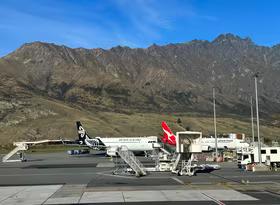Assessing the impact of the COVID-19 outbreak
This article was first published on 12 February, but the data on COVID-19 has been updated.
The emergence of a new coronavirus strand, COVID-19, has potentially upended both the global and domestic economic outlook for 2020. Although it’s still too early to fully evaluate how damaging the outbreak may be, early signs are for a much larger economic hit than first anticipated, with a growing risk that New Zealand could experience a recession in 2020.
Acknowledging the uncertain and rapidly changing dynamics of the COVID-19 outbreak, this article highlights the scale of the potential effect on the New Zealand economy, explains the drivers behind the likely impact, and identifies the sectors most at risk. Infometrics is keeping a daily watch on the outbreak and will continue to update clients.
In late December, COVID-19 was identified in Wuhan, China. Since the outbreak, nearly 80,000 cases have been confirmed worldwide, more than 2,600 people have died, travel restrictions not seen in decades have been implemented, and global supply chains have been disrupted.
Although it was initially compared to the SARS outbreak in 2002/03, the current outbreak is considerably different. It is less deadly 1 but considerably more contagious. In 2003, reporting on the SARS outbreak took months to emerge, with original World Health Organisation (WHO) reporting pointing towards an outbreak date of 1 February 2003, which was later revised to 1 November 2002. Even if the more conservative February date is chosen, the first monitoring reports of SARS cases were published on Day 45, with 167 cases and four deaths. After 188 days, there were just over 8,000 cases and almost 900 deaths. As of Day 55 of the COVID-19 outbreak (23 February 2020), there were nearly 80,000 cases and more than 2,600 deaths (see Chart 1).
The COVID-19 outbreak is spreading at a much faster rate than SARS, even though China and other countries have taken much more drastic and much faster action to combat the spread than with SARS. The sheer number of cases so far points towards a much larger outbreak. A larger outbreak will also see a larger economic effect, both due to the larger and more long-lasting measures taken to contain the outbreak, and the wider decline in sentiment and activity as consumers and businesses become increasing fearful and less active as the outbreak continues.
Economic activity both in New Zealand and globally will take a sharp hit from the outbreak in the first half of 2020, although activity could rebound strongly after the outbreak is contained. An immediate and significant reduction in economic activity means that a quarterly drop in GDP is a distinct possibility. If the outbreak continues, the slump in local economic activity could trigger New Zealand’s first recession in a decade.
We see three broad areas of economic activity to focus on as the outbreak continues.
- The outbreak really gathered momentum around the same time as Chinese New Year, when people were off work and gearing up for gatherings and celebrations. The holiday period was extended, further reducing output as workers stayed home. Restrictions remain across large parts of China, and a widespread cancellation of large tour groups was implemented.
- Many factories are still not open, while office workers are working from home, and the lack of workers has reduced wharf capacity and limited export arrivals into China.
- Overall, Chinese economic growth is expected to ease from 6.0%pa to 5.4%pa or below, a significant slowdown for the world’s second-largest economy.
- The lack of industrial output in China has severely disrupted global supply chains, leading to plant and factory closures across the globe as firms struggle to find the inputs they need.
- Travel bans in various countries have also been implemented to contain the outbreak, reducing global travel.
- Oil prices have fallen from US$63 on January 3 to US$50/bl on 12 February due to the decline in demand from China, a sharp reversal after January’s focus on Middle Eastern tensions and higher oil prices.
- Overall economic activity is likely to drop, with lower export earnings as goods (generally primary sector-based) and services (tourism and international education) exports suffer.
- Lower Chinese growth will also hit New Zealand’s other trading partners, such as Australia, which will exacerbate weaker demand for exports.
- The wider fear and lower export activity will undermine business and consumer confidence, with the likelihood of slower growth in consumption and investment spending.
- Possible policy responses to combat a slowdown include a lower official cash rate, tax adjustments from the government, or other plans for more direct and fast-acting fiscal stimulus to increase output.
COVID-19 throws into sharp relief New Zealand’s increasing reliance on China as an export market since the signing of a free trade agreement (FTA) in 2008. In 2007, prior to the FTA, China comprised just over 8% of New Zealand global two-way trade. By 2019, China represented 20% of New Zealand’s two-way trade. In the past 12 years, two-way trade with China has quadrupled to $32.7b (see Chart 2).
This increased reliance on China means there will be a range of immediate and substantial effects on various New Zealand sectors.
- Tourism activity is expected to further lose momentum. Internal Chinese travel restrictions and New Zealand’s interim ban on Chinese arrivals could lop off 25,000 arrivals in February 2020 alone, representing around 6% of all monthly arrivals. The effects on tourism are amplified by the timing around Chinese New Year, the fact that Chinese visitors spend more on average than other visitors, and that Chinese tourism has already been softening, raising the risk of a sharper downwards spiral
- Retail activity has already seen a noticeable effect, with lower foot traffic, lower orders, and reduced hours at some shops as spending activity softens. As the outbreak persists, increasing numbers of retailers are likely to feel operating pressures build.
- International education is already counting the cost, with 6,500 students who were scheduled to attend New Zealand universities remaining in China. The effects could be even greater when the rest of New Zealand’s international education sector is considered, alongside the flow-on effects from not having these students spending in the local economies.
- Seafood exports have borne the most immediate effect of the outbreak, with reports of seafood markets shut and cancelled orders as Chinese New Year celebrations were called off, leading to rapid price falls. China takes around 38% of New Zealand’s total seafood exports. The release of caught crayfish in New Zealand is underway to mitigate losses.
- Forestry is being severely hit, with China taking more than 50% of New Zealand forestry exports. A lack of Chinese wharf and economic activity has curtailed log demand. More than 1,000 logging workers are currently out of a job s logging operations grind to a halt, and Eastland Port has stopped log exports. Wood prices were recovering after a sharp dip in 2019, but the outbreak now looks set to force prices even lower.
- Meat exports have struggled to make it through Chinese wharves as workers remain at home, resulting in New Zealand meat processors running out of chiller space. Local processors have now started selling meats into alternative markets and have reduced their kill capacity. The timing of lower processor capacity is hurting farmers, with drought conditions across much of the country forcing farmers to try to cull herds to reduce feed burdens. With less slaughtering capacity than previously expected, additional supplementary feed is likely to be needed to keep stock on farms. China took 38% of all meat exports in 2019, up from less than 2% a decade earlier.
- Dairy prices fell 4.7% in the latest GlobalDairyTrade auction, but that result was still stronger than some indicators were suggesting. With global and domestic production already lower than a year ago, there’s support still for current prices, but this could change rapidly.
We’re maintaining a constant watch on how the outbreak evolves and how different sectors are affected. We have previously noted some of the initial impacts in this article for the Asia Media Centre, and we also expect a focus to turn onto the regional distribution of these shocks, and so our analysis from last year that assessed China’s importance to regional New Zealand could be useful.
A clearer picture of the outbreak itself, responses to the outbreak, and how economic data is shaping, will emerge over the next two months. Key official datasets will include February’s overseas merchandise trade data, published on March 25, and February’s international tourist data, published on April 14.
Until then, our team is available for clients who wish to discuss in more detail our thinking about the economic implications of the COVID-19 outbreak for their area or sector. Please contact Infometrics Senior Economist Brad Olsen for more details.
1 The current mortality rate is just above 3%, compared to 10% for SARS. However, the SARS mortality rate rose as the outbreak continued, and the COVID-19 mortality rate could increase as time goes on.
















